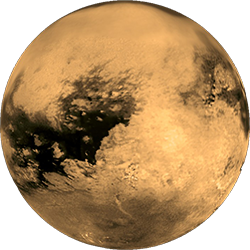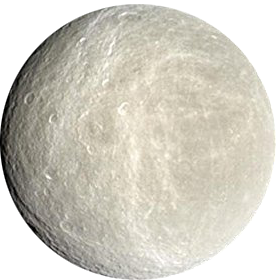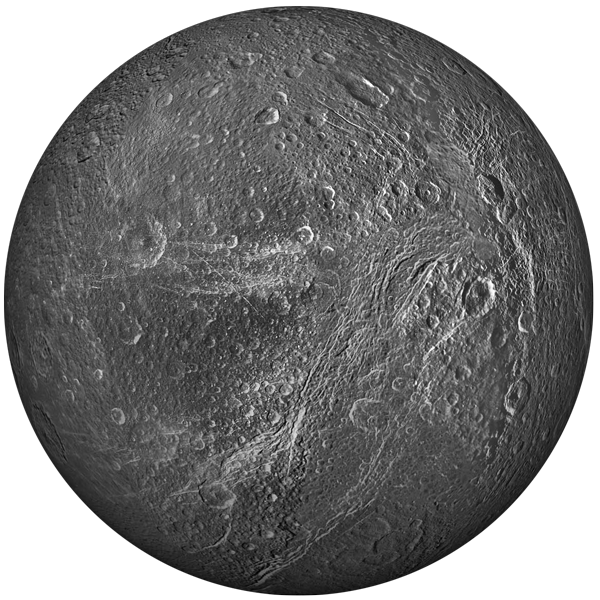Saturn

Satellites
- Titan
- Rhea
- Iapetus
- Dione
- Tethys
- Enceladus
- Mimas
- More...
- Radius: 3,959 miles
- Distance From Sun: 483,800,000 miles
- Mass: 1.898E27 kg
- Gravity: 24.79 m/s²
- 1 Day: 0d 9h 56m
- Orbital Period: 12 years
- Population: 0 confirmed
Saturn
Saturn is the sixth planet from the Sun and the second-largest in the Solar System, after Jupiter.
It is a gas giant with an average radius about nine times that of Earth. It has only one-eighth the average density of Earth, but with its larger volume Saturn is over 95 times more massive. Saturn is named after the Roman god of agriculture; its astronomical symbol (♄) represents the god's sickle.
Saturn's interior is probably composed of a core of iron–nickel and rock (silicon and oxygen compounds).
This core is surrounded by a deep layer of metallic hydrogen, an intermediate layer of liquid hydrogen and liquid helium, and finally a gaseous outer layer. Saturn has a pale yellow hue due to ammonia crystals in its upper atmosphere. Electrical current within the metallic hydrogen layer is thought to give rise to Saturn's planetary magnetic field, which is weaker than Earth's, but has a magnetic moment 580 times that of Earth due to Saturn's larger size. Saturn's magnetic field strength is around one-twentieth of Jupiter's. The outer atmosphere is generally bland and lacking in contrast, although long-lived features can appear. Wind speeds on Saturn can reach 1,800 km/h (1,100 mph), higher than on Jupiter, but not as high as those on Neptune. Titan Rhea Iapetus Dione The moons of Saturn are numerous and diverse, ranging from tiny moonlets less than 1 kilometer across to the enormous Titan, which is larger than the planet Mercury. Saturn has 62 moons with confirmed orbits, 53 of which have names and only 13 of which have diameters larger than 50 kilometers, as well as dense rings with complex orbital motions of their own. Seven Saturnian moons are large enough to be ellipsoidal in shape, though only two of those, Titan and Rhea, are currently in hydrostatic equilibrium. Particularly notable among Saturn's moons are Titan, the second-largest moon (after Jupiter's Ganymede) in the Solar System, with a nitrogen-rich Earth-like atmosphere and a landscape featuring dry river networks and hydrocarbon lakes found nowhere else in the solar system; and Enceladus since its chemical composition is similar to that of comets. In particular, Enceladus emits jets of gas and dust which could indicate presence of liquid water under its south pole region and could potentially harbor a global ocean under its surface.Saturn's Biggest Moons







